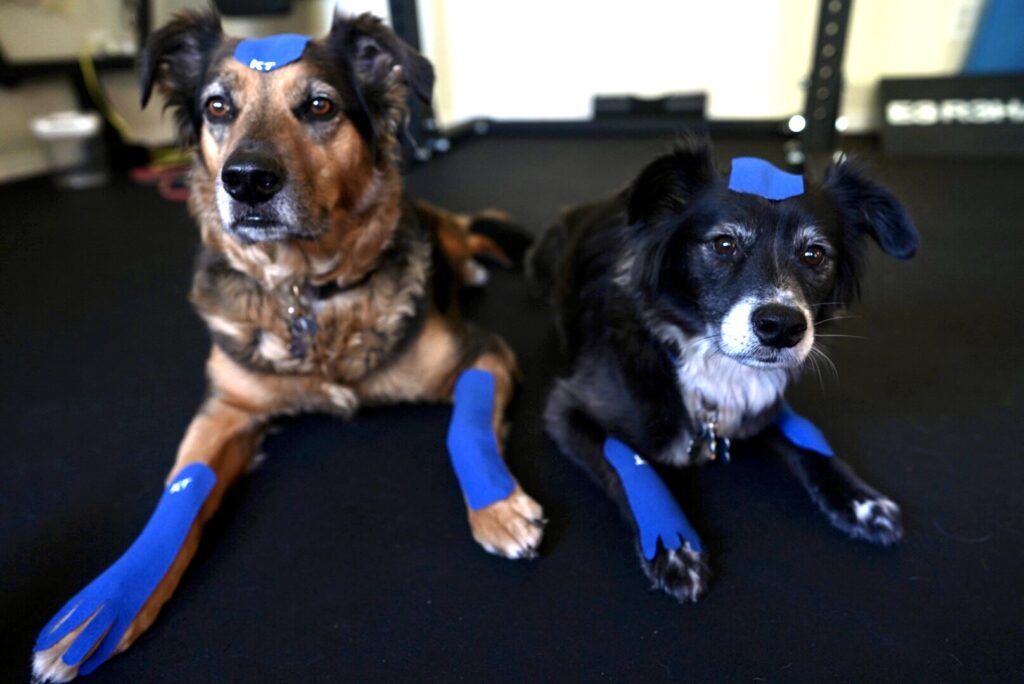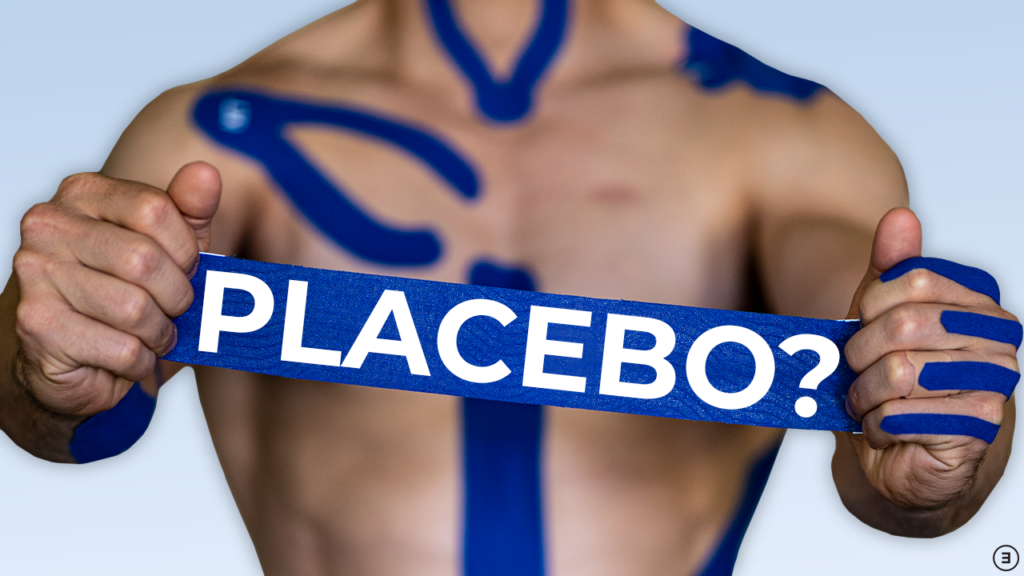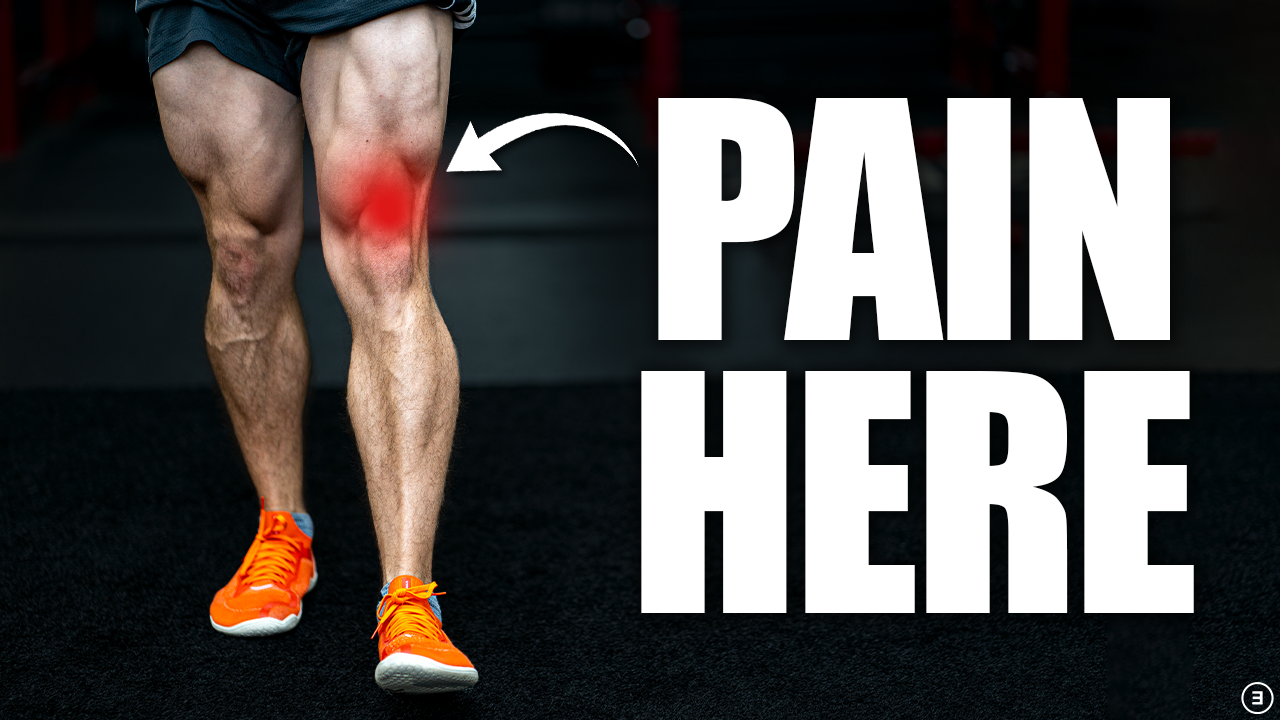The purpose of this blog is to answer 3 questions: 1. What does kinesiology tape (KT) supposedly do? 2. How does it supposedly work? 3. What does the research say? I’m also going to discuss my number one issue with it.
Looking for rehab or performance programs? Check out our store here!
What Does Kinesiology Tape Supposedly Do?
One popular company states that it “has the ability to re-educate the neuromuscular system, reduce pain and inflammation, optimize performance, prevent injury and promote good circulation and healing.”
Another states that it “relieves swelling through decompression which speeds recovery” and “increases awareness of your body position.”
The last site states that it’s “designed for muscle, ligament, and tendon pain relief and support.*”
Many of these statements come with a hard-to-find disclaimer – “*not proven clinically for all injuries.”
How Does Kinesiology Tape Supposedly Work?
The most consistent assertion is that it “microscopically lifts the skin away from the muscle and fascia below, creating a decompressive effect.” Other than that, the claims on the websites are fairly vague and relate back to improvements in lymphatic drainage, pain, inflammation, etc.
What Does The Research Say About…
Performance? A 2018 systematic review by Reneker et al concluded that “there is a lack of compelling evidence to support the use of KT to enhance the sports performance abilities based on this review.”
Injury Prevention? A 2012 meta-analysis by Williams et al concluded that “there was little quality evidence to support the use of KT over other types of elastic taping in the management or prevention of sports injuries.”
Swelling? A 2015 randomized controlled trial by Nunes et al concluded that “the application of Kinesio Taping, with the aim of stimulating the lymphatic system, is ineffective in decreasing acute swelling after an ankle sprain in athletes.”
Proprioception? Studies by Aarseth, Bailey, de Oliveira, and Abbasi found no improvements in proprioception at the ankle, shoulder, or low back with the use of KT.
Strength & Flexibility? A 2018 trial by Reynard et al reported “no clinical benefits of KT on ROM, strength, or pain were noted in a population of subjects who underwent rotator cuff surgery.”
Circulation? Studies by Stedge, Woodward, and Yang found no improvements in circulation or blood flow when KT was applied to the forearm, calf, or low back.
Lymphatic Drainage? The most recent Clinical Practice Guideline From the Academy of Oncological Physical Therapy states that KT “cannot be recommended to replace short-stretch compression bandaging in stage II and III breast cancer-related lymphedema.”
Pain? A 2020 systematic review with meta-analysis by Junior et al found “no evidence to support the use of KT in clinical practice for patients with chronic non-specific low back pain.”
Before ending this section, I want to point out two things:
- This is not an all-inclusive list.
- You can find research that demonstrates some benefits of KT. However, a 2014 systematic review by Parreira et al summarizes this information nicely – “When used for a range of musculoskeletal conditions, Kinesio Taping had no benefit over sham taping/placebo and active comparison therapies, the benefit was too small to be clinically worthwhile, or the trials were of low quality. Therefore, current evidence does not support the use of Kinesio Taping for musculoskeletal conditions.”
My Number One Issue With Kinesiology Tape
My issue with KT does not lie with you, the user. If you’re an informed consumer who chooses to self-apply KT because it’s an affordable intervention that helps you get through training, that’s your decision to make. I think it’s fine, especially if you’re not sacrificing other long-term management strategies in the process, such as appropriate sleep, nutrition, etc.
My issue is with the companies that promote false or exaggerated claims to drive sales as evidenced by the class action lawsuits they’ve had (you can do a quick Google search). The type of tape, direction of application, and amount of tension don’t seem to make a difference, and you don’t need any formalized training to apply it.
It’s also being promoted for dogs, cats, and horses. There’s even a picture of an elephant with it on. Rosie and Kai (my dogs) don’t approve.

Summary
In summary, you can self-apply KT if you like it, but the research doesn’t support the outlandish claims that clinicians and companies promote. You also don’t have to overthink how you apply it.
Looking to improve your strength, range of motion, and power to enhance your function and performance? Check out our Knee Resilience program!
Want to learn more? Check out some of our other similar blogs:
Stop Trying To Fix Anterior Pelvic Tilt
Thanks for reading. Check out the video and please leave any questions or comments below.






